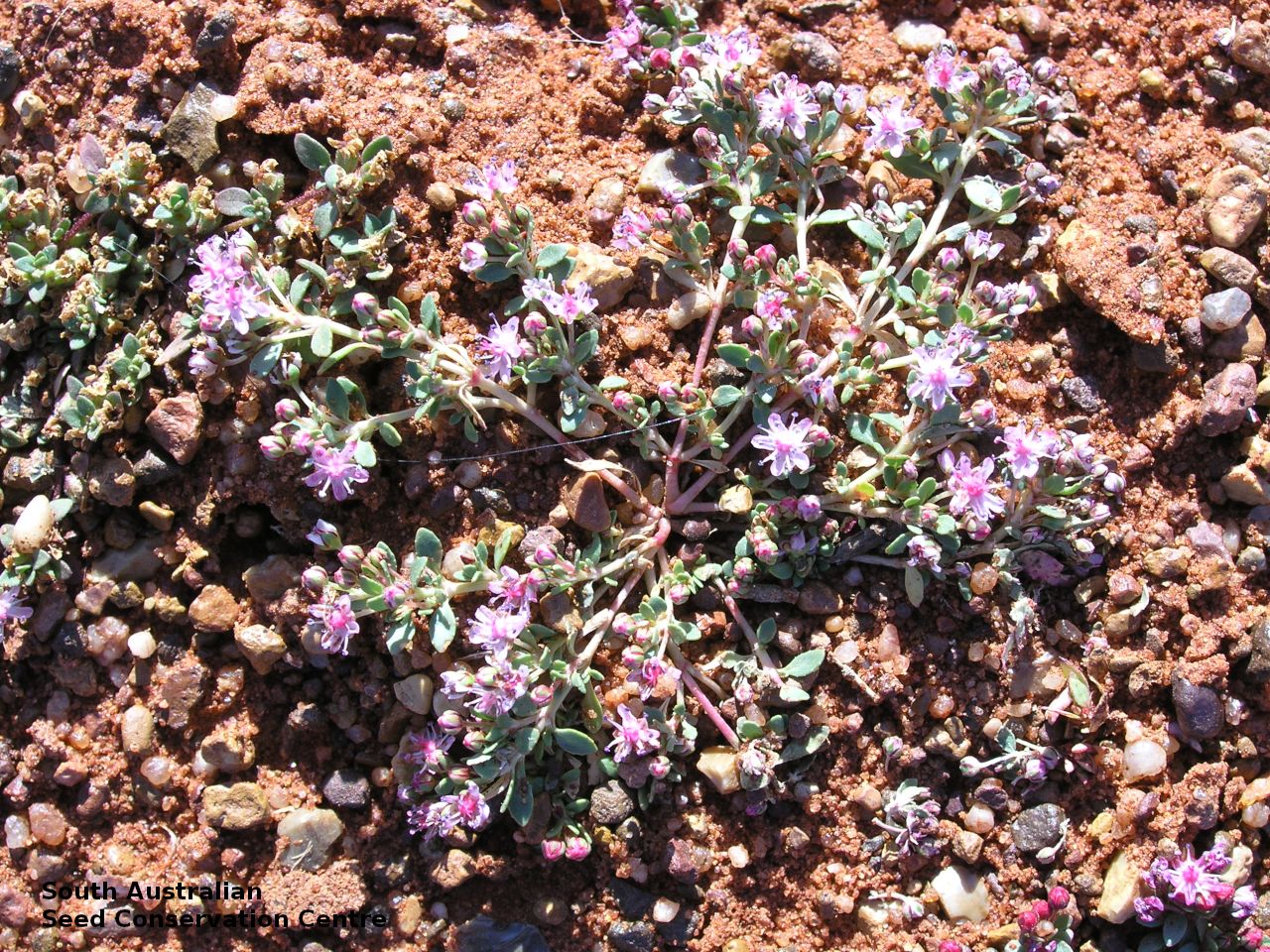
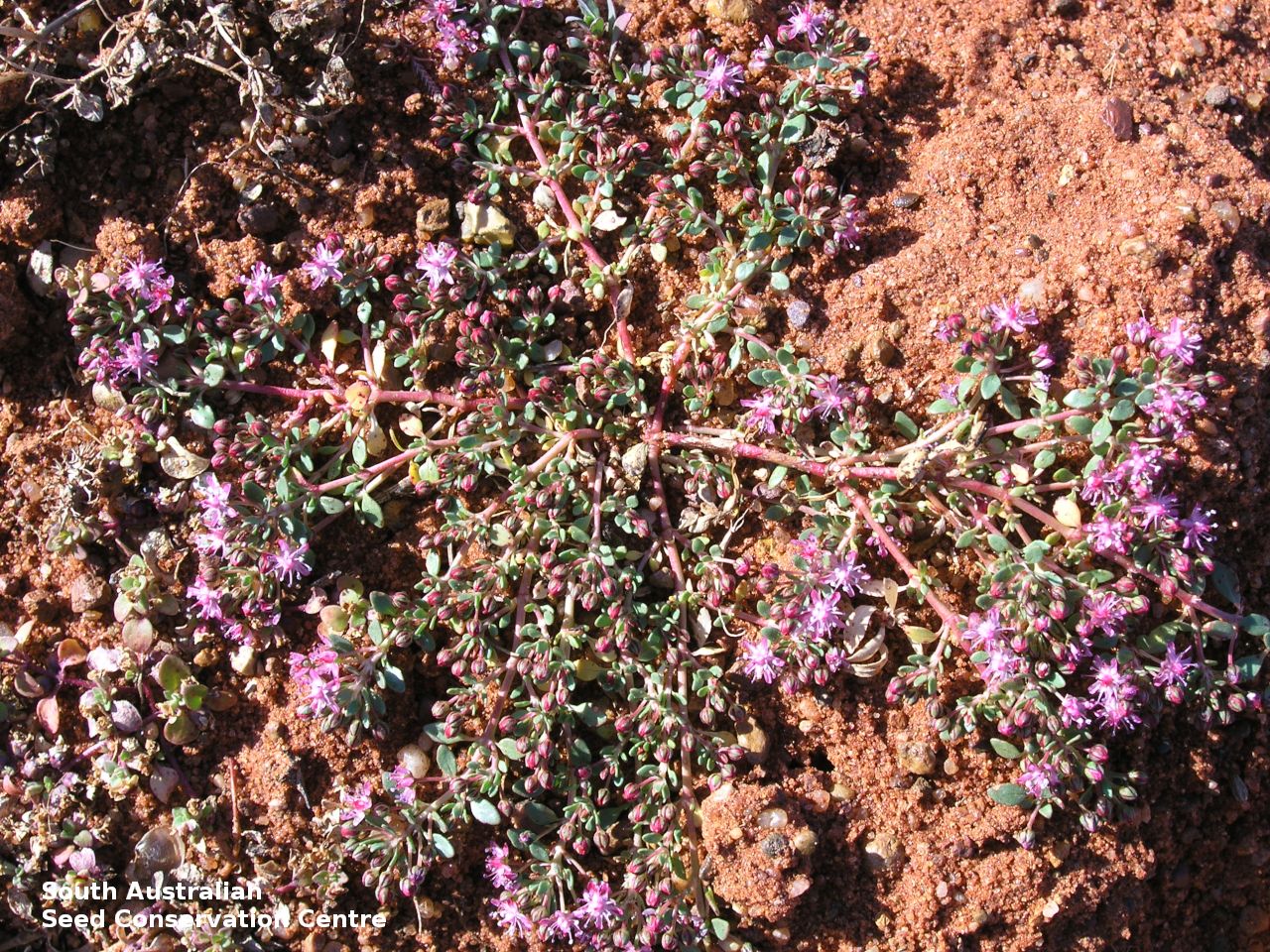
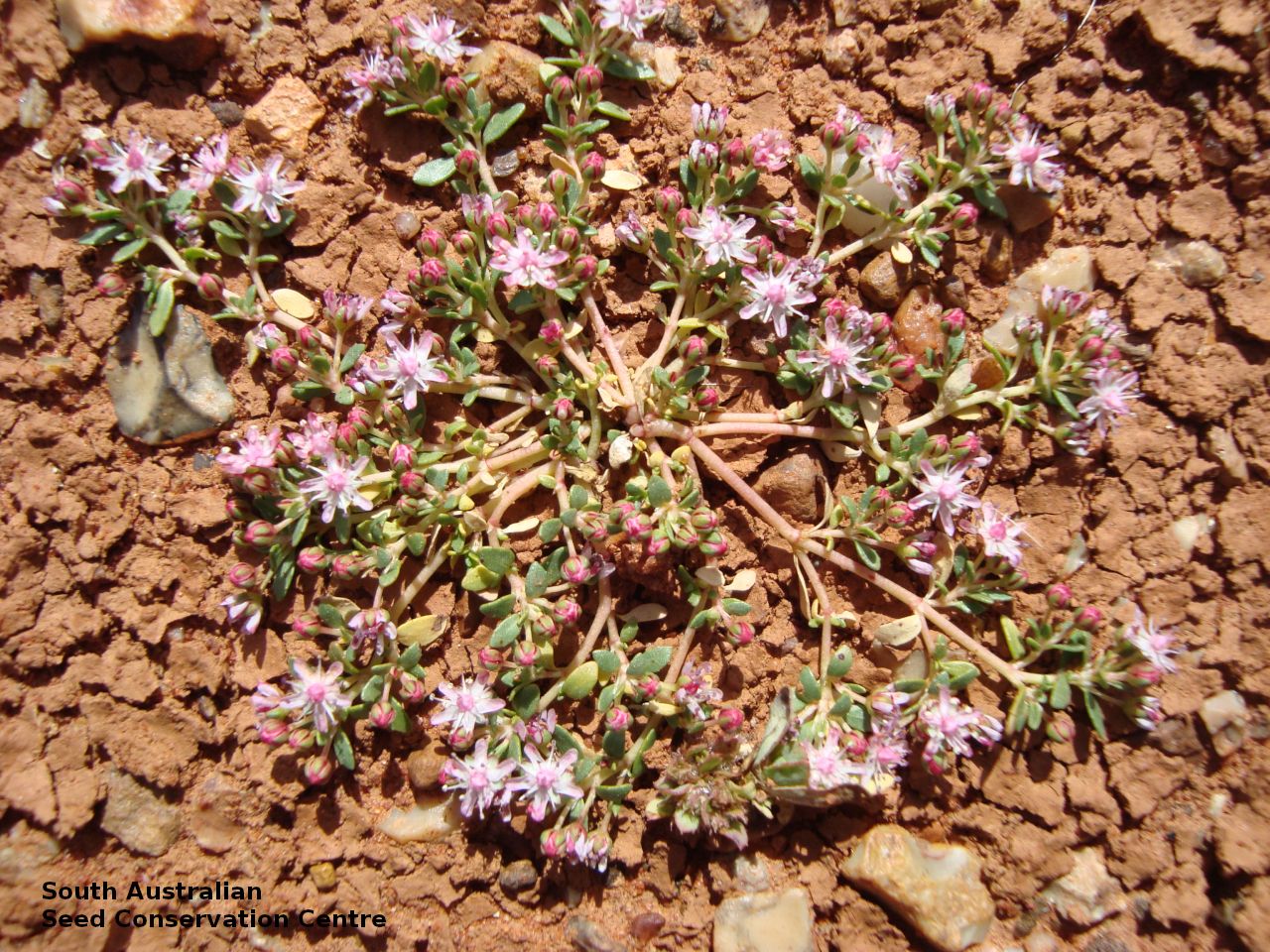
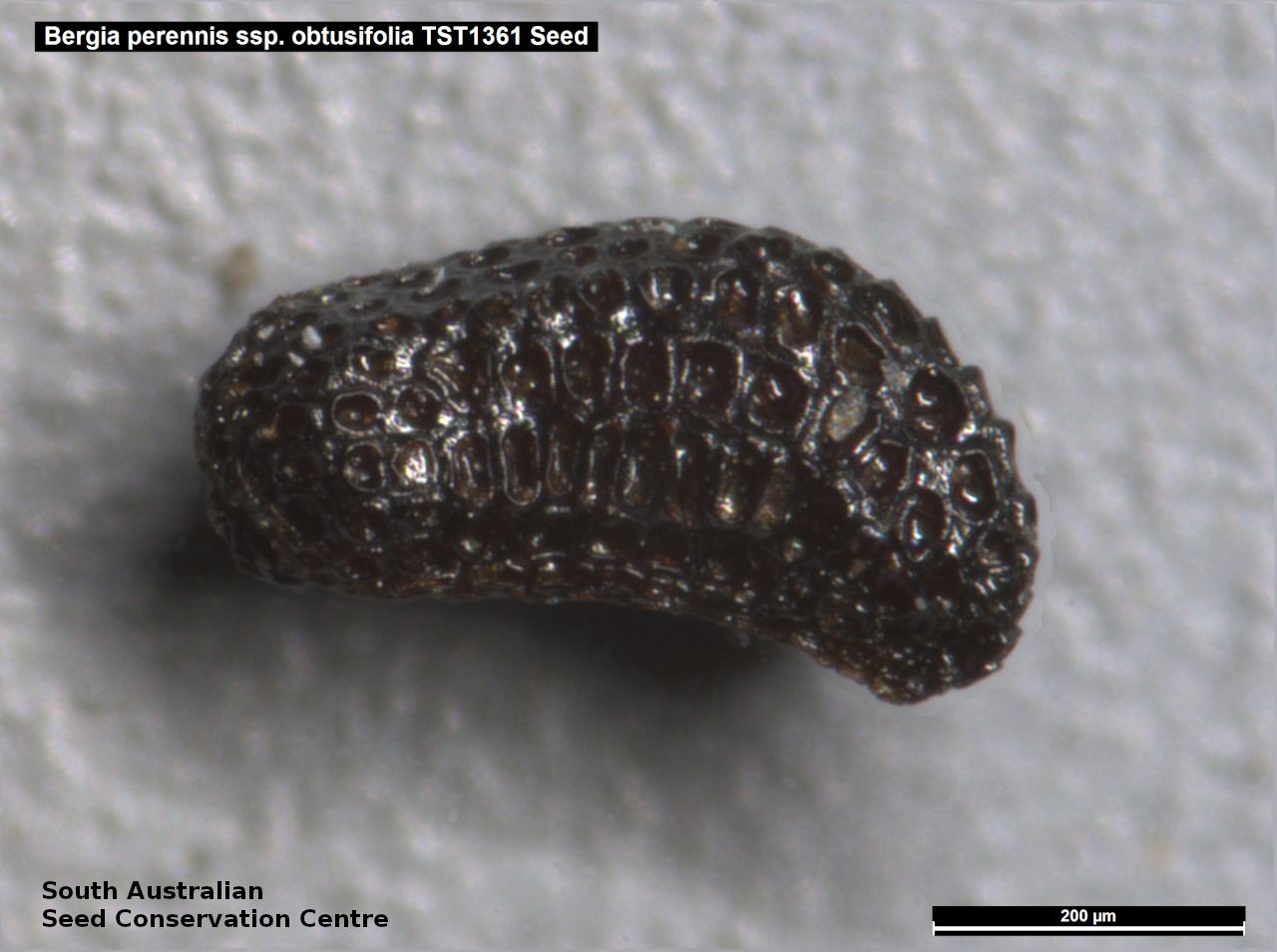
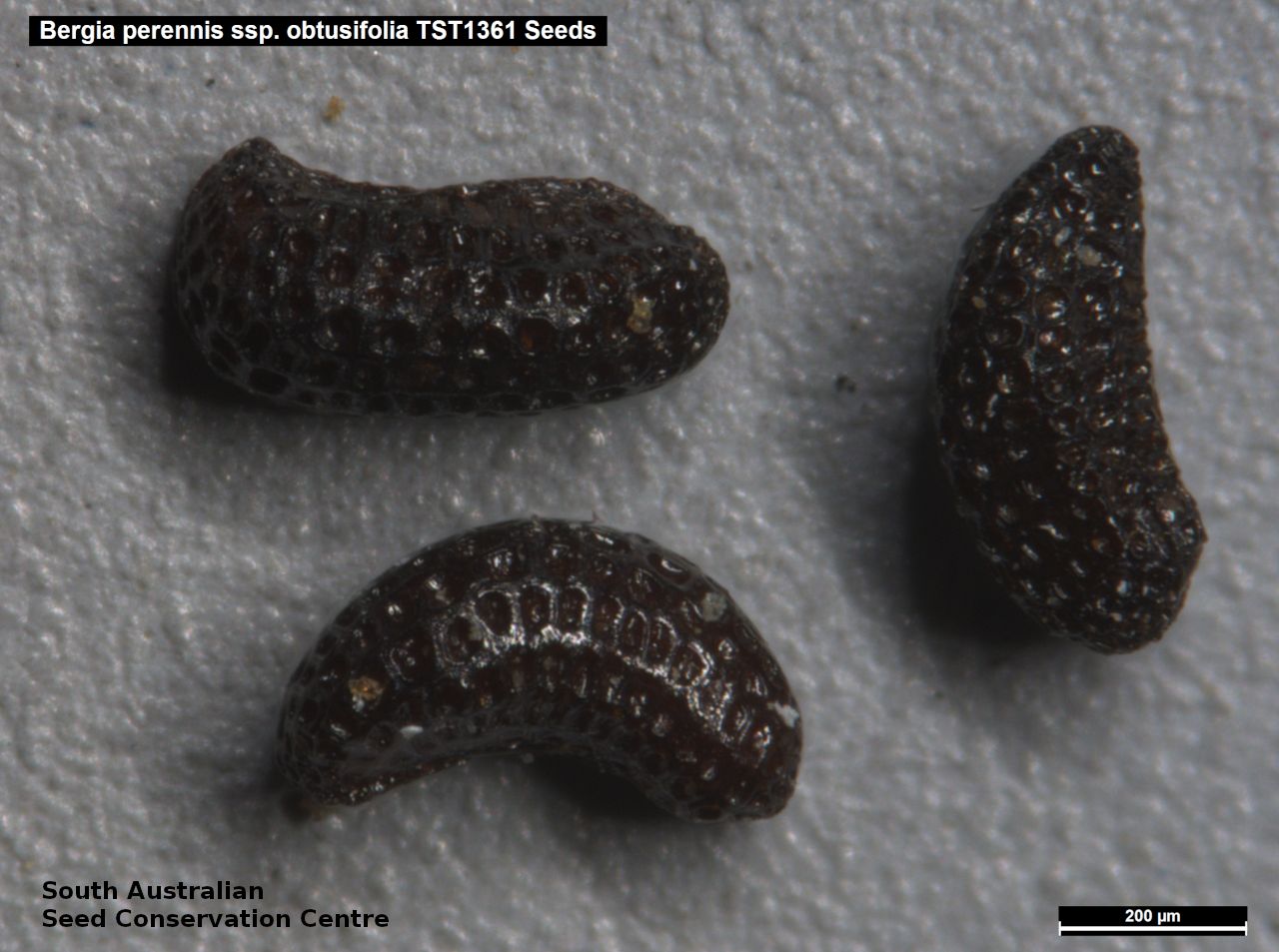
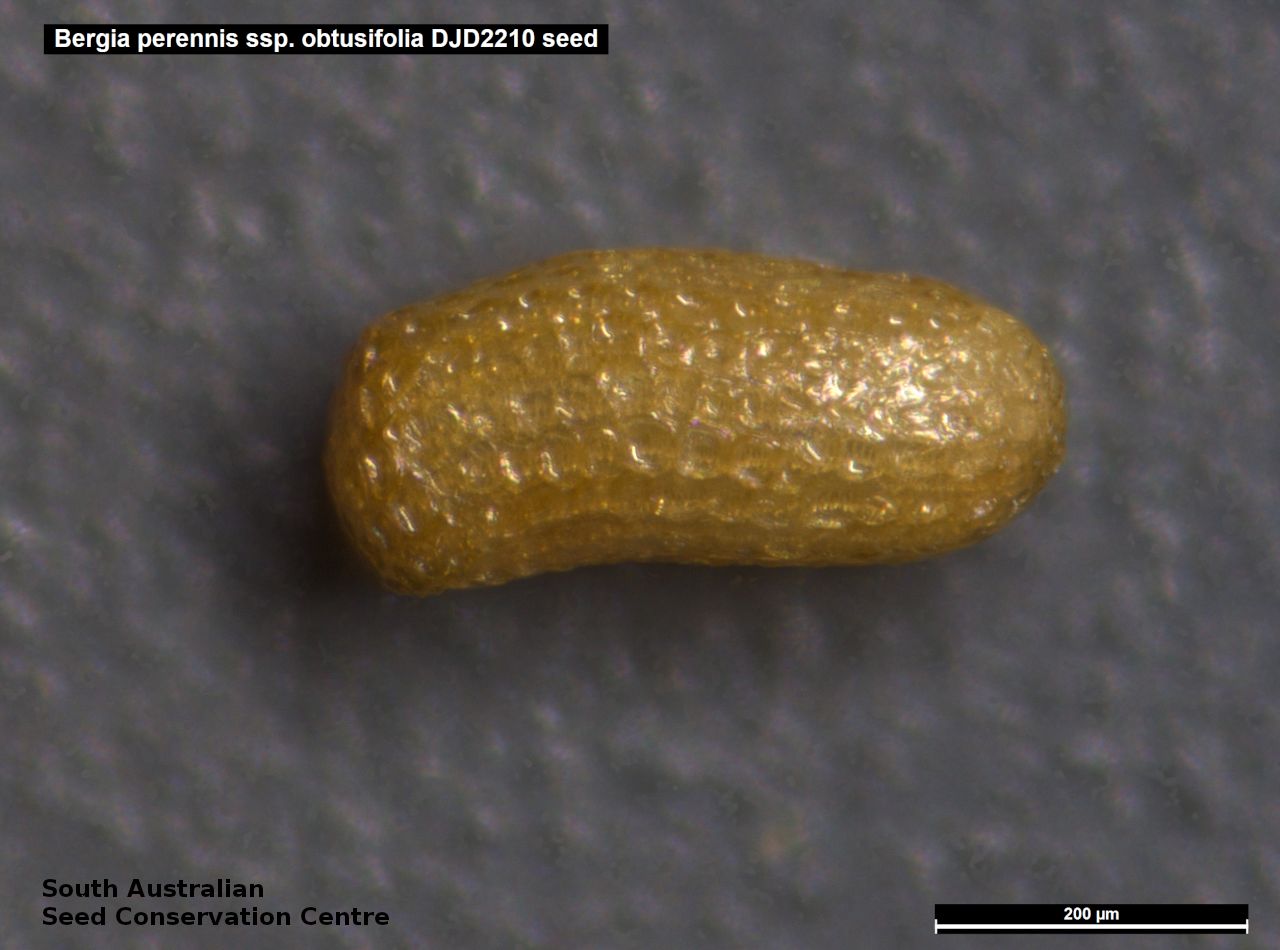
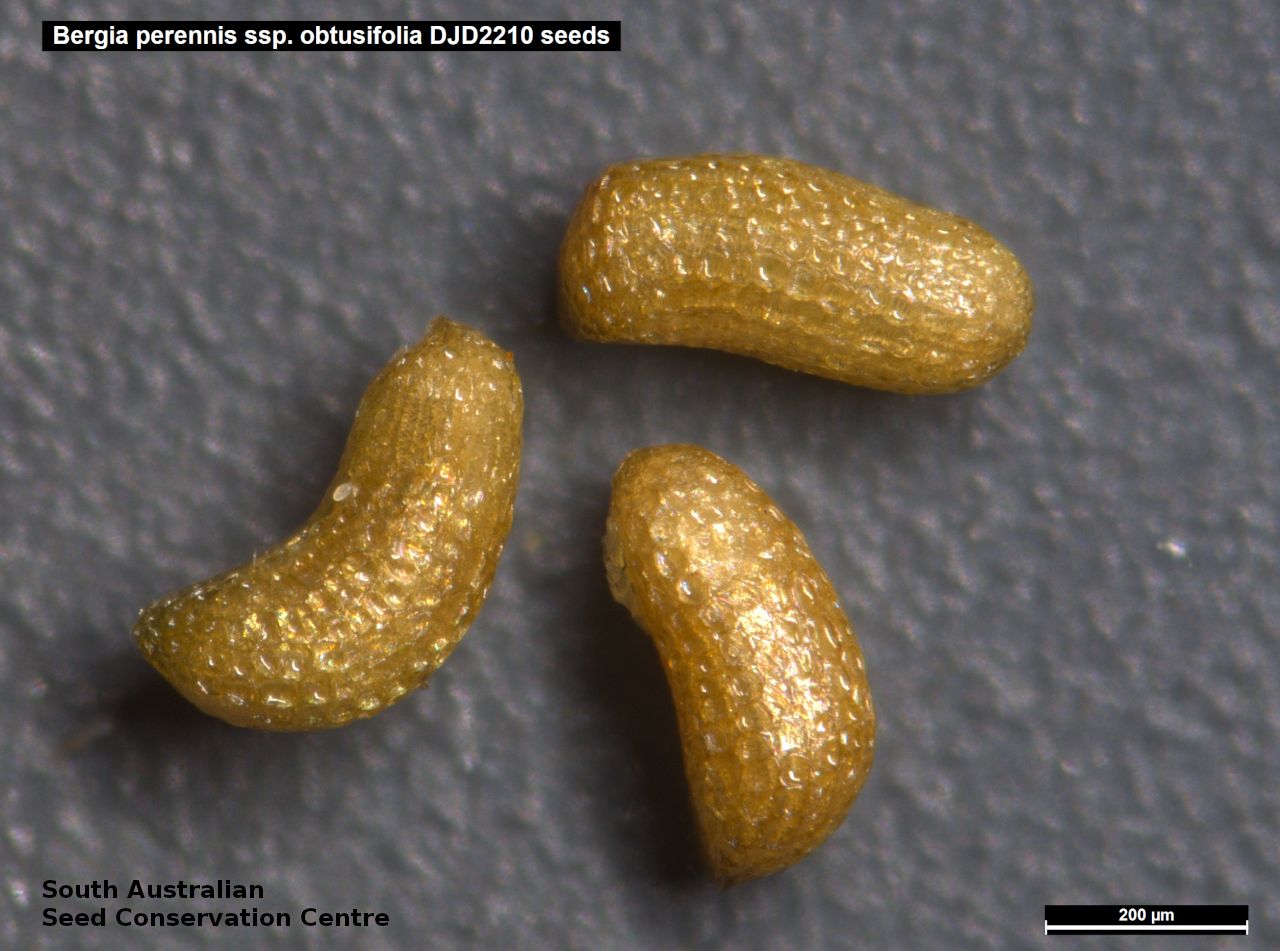
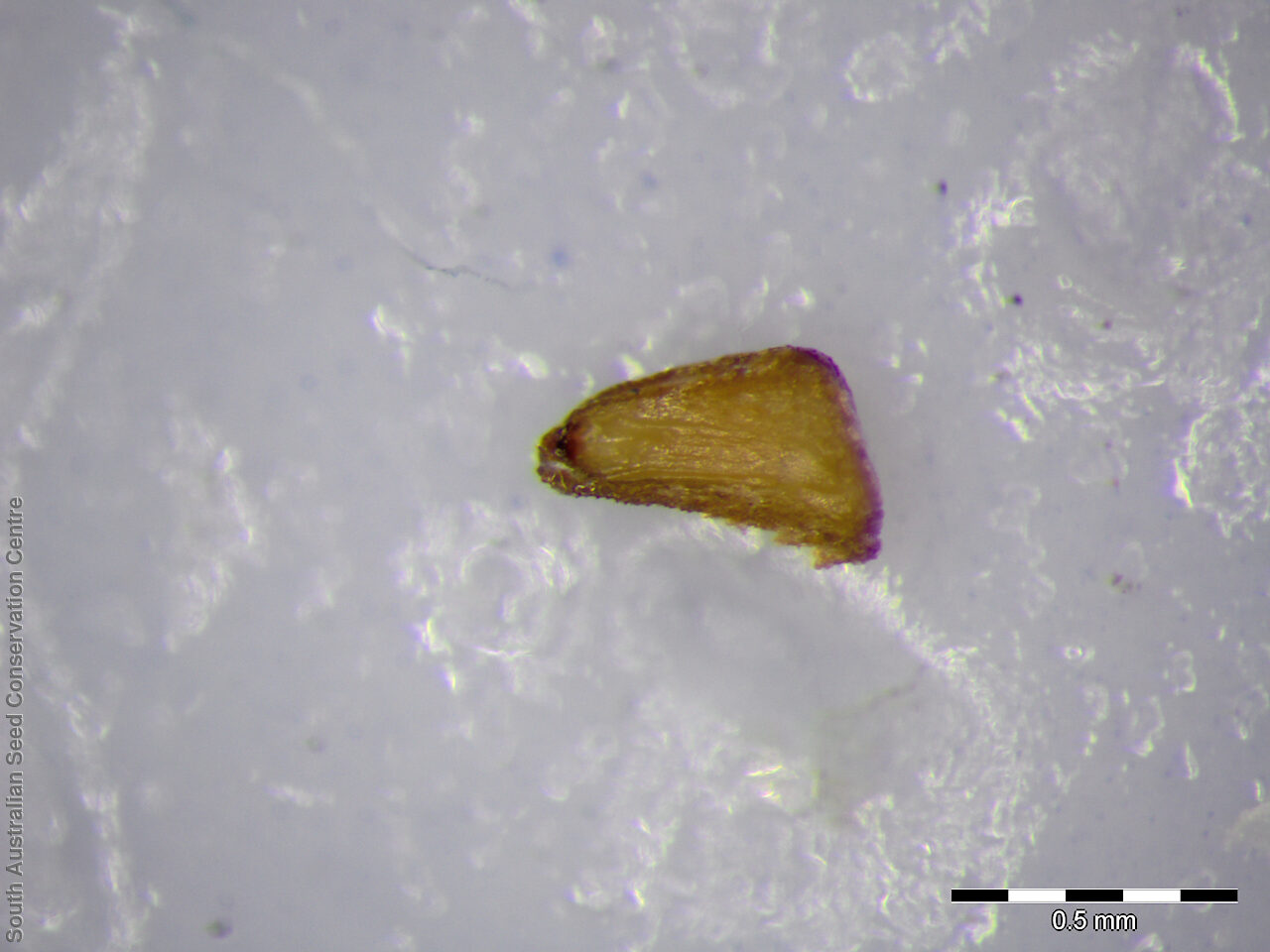
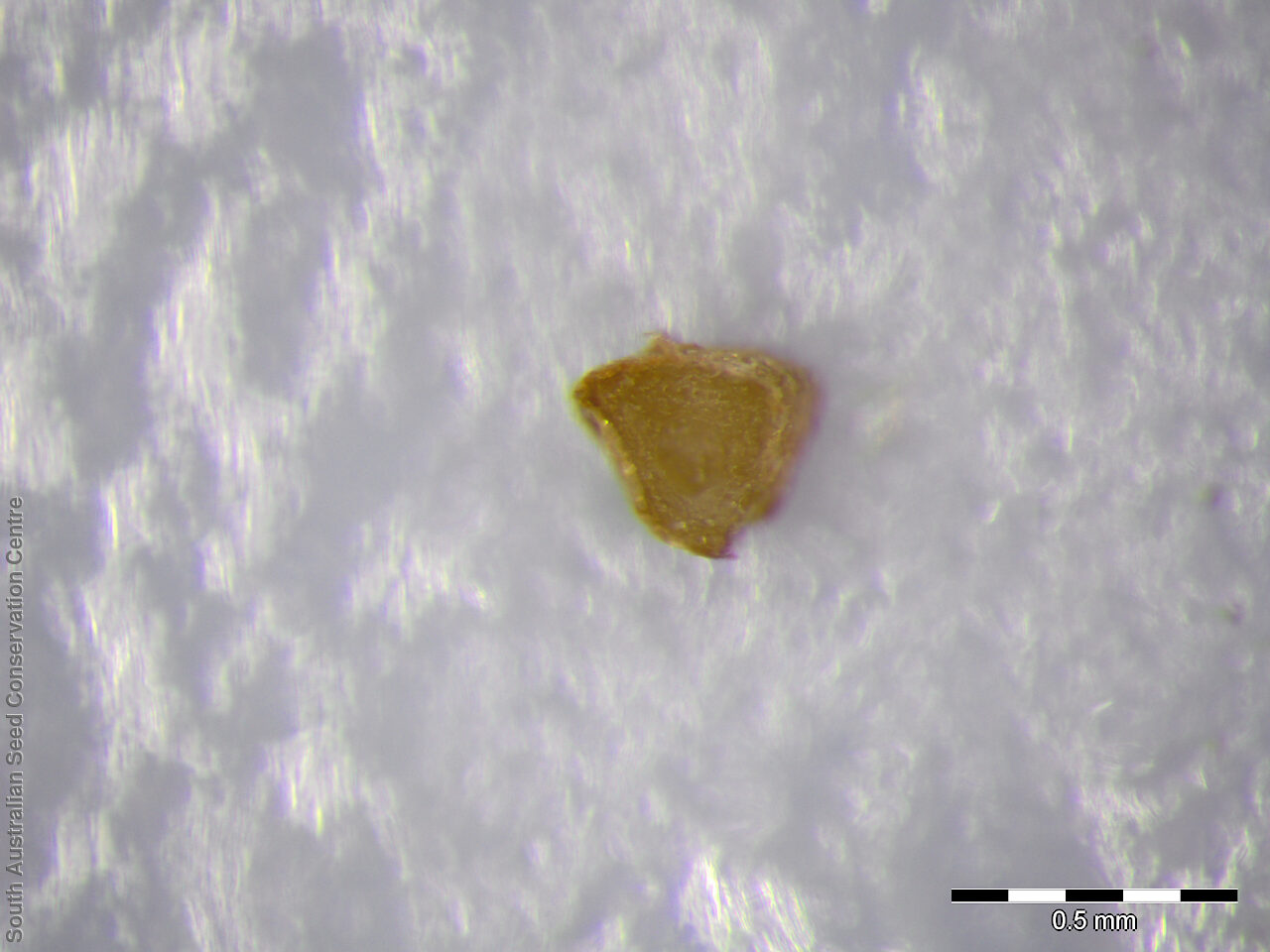


Common names
Perennial Water-fire
Blunt-leaf Perennial Water-fire
Etymology
Bergia named after Dr Petter Jonas Bergius (1730-90), Swedish physician and botanist. Perennis from the Latin 'per' meaning through and 'annus' meaning year; referring to the perennial nature of this species. Obtusifolia from the Latin 'obtusus' meaning blunt and 'folium' meaning a leaf; referring to the obtuse leaf apices, a distinguishing feature from the other subspecific taxa of Bergia perennis.
Distribution and status
Few record from the north central part of South Australia, growing in sandy or loam soils often in saline areas. Also found in Western Australia and the Northern Territory. Native. Uncommon in South Australia. Common in the other states.
Herbarium regions: North Western, Gairdner-Torrens
NRM region: Alinytjara Wilurara
AVH map: SA distribution map (external link)
Plant description
Prostrate perennial herb. Indumentum of eglandular hairs or lacking. Leaves elliptic to almost circular, to 10 mm long and 2.25 mm wide, obtuse, margin smooth to inconspicuously serrulate. Stipules to 1.5 mm long. Bracteoles inconspicuous, at base of pedicel, to 1 mm long and 0.25 mm wide. Sepals elliptic to ovate, to 2.5 mm long and 1-2 mm wide, obtuse. Petals to 3.8 mm long and 1.25 mm wide, to twice length of sepals, pink to white. Stamens to 1.75 mm long. Flowering between April and September. This subspecies differ from the other subspecies found in South Australia by having leaf apex acute (obtuse in B. perennis ssp. exigua) and bracteoles conspicuous, mostly well above base of pedicel obscure at base of pedicel (obscure at base of pedicel in B. perennis ssp. exigua) and sepals mostly less than 1.5 mm long (mostly greater than 1.5 mm long in B. perennis ssp. exigua). Fruits are globular capsule to 1.5 mm long and 1.5 mm wide. Seed embryo type is linear.
Seed collection and propagation
Collect seeds between July and November. Collect stems with maturing capsules, those that are fat, drying off and contain brown seeds. Place the stems in a tray and leave to dry for one to two weeks. Then rub the plant especially the capsules gently by hand to dislodge the seeds. Use a fine sieve to separate the unwanted material. Be very careful as the seeds are very small. Store the seeds with a desiccant such as dried silica beads or dry rice, in an air tight container in a cool and dry place.
| Location | No. of seeds (weight grams) | Number of plants | Date collected | Collection number Collection location | Date stored | % Viability | Storage temperature |
|---|---|---|---|---|---|---|---|
| BGA | 124,000 (2.48 g) | 50+ | 18-Aug-2011 | DJD2210 | 1-Nov-2012 | 100% | -18°C |
| BGA MSB | 33,500 (1.04 g) 33,500 (1.04 g) | 30 | 23-Nov-2016 | TST1361 Lake Eyre | 1-Nov-2017 | 100% | +5°C, -18°C, -80°C |
Number of plants: This is the number of plants from which the seeds were collected.
Collection location: The Herbarium of South Australia's region name.
% Viability: Percentage of filled healthy seeds determined by a cut test or x-ray.